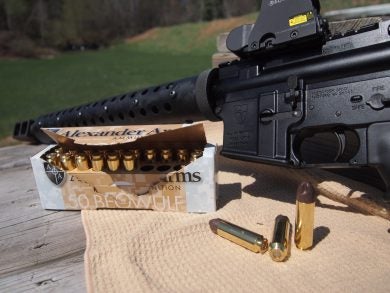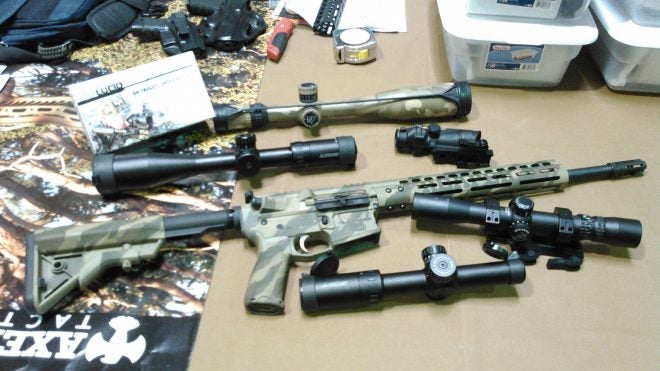Let’s talk about the importance of words, a little terminology 101. After all, you never know when you might learn something new – or find something worth passing on to a newbie (or even if it isn’t exactly new, it might serve as a gentle reminder of its value). And if you love guns like I do (passionately, ridiculously, and possibly obsessively), you’ll probably be nodding your head in agreement as you go, even as you roll your eyes. Yes, we love guns, so please, let’s get a few things straight.
It’s Not a Clip!
The old clip-versus-magazine discussion. In the world of journalism, there’s a joke about learning gun terminology to ensure the greatest possible accuracy in writing: it’s a clip. It’s a clip, it’s a clip, it’s a clip. The “it’s a clip” comment is often made by many who know better. For example, a friend going through the police academy grew frustrated listening to an instructor give a speech where he yelled, “You put it in your gun; you don’t read it, so it isn’t a magazine!”
What’s the difference? I’m so glad you asked (or are being forced at gun point to read this…whichever…).
There’s a simple explanation: the magazine feeds the weapon, and the clip feeds the magazine. Magazines hold rounds using a spring for pressure and are loaded into the gun so rounds can be fed into the gun’s chamber. Just to confuse matters, there are several kinds of magazines, including tubular, box, drum, and rotary. To further confuse things, some magazines are removable, and some are fixed.
A clip doesn’t have a spring. It holds rounds in a neat row so you can charge that particular gun’s magazine. In addition, there are stripper clips which speed things up by helping strip rounds into a magazine. The M1 Garand is frequently used as an example of clips being fed into the magazine; when all the rounds have been fired, the clip is ejected.
Faster Than a Speeding…
“Bullet” just might be the most misused word in the industry – and in the gun control world, too. In fact, a large gun control group released an ad admonishing gun owners for their possession of evil firearms, claiming guns take away children. In the ad is a gun supposedly being fired, complete with a blurred-motion…cartridge. Apparently if you really want to stop someone you use the entire round. It could even be a new ad campaign: “When just a bullet won’t do.”
A bullet is the projectile that exits the barrel of a gun. It isn’t an entire cartridge. The cartridge, or round, is what you see tucked in neat rows in a new box of ammo. Bullets are the part that does the damage. Of course, without the other components, the bullet won’t get far. The term “cartridge” refers to the finished product, as does “round,” and includes the: case, primer, propellant, and projectile (yes, that’s the bullet). So, members of anti-gun campaigns and certain others, kindly stop referring to a round as a bullet.

How Big Is It?
A brief word on caliber. The caliber of the bullet – yes, back to bullets once again – refers to its size. Caliber refers to the diameter of the bullet and is expressed numerically by millimeters or hundredths of an inch. We’ll avoid a riot by not starting a caliber debate today.
Accurate? Or Precise? Exactly…
 This one is frequently misused: accuracy versus precision. There’s a tendency to use these terms interchangeably, but they aren’t. Accuracy refers to how consistently you’re able to hit a particular target. Precision refers to how tight your groups are.
This one is frequently misused: accuracy versus precision. There’s a tendency to use these terms interchangeably, but they aren’t. Accuracy refers to how consistently you’re able to hit a particular target. Precision refers to how tight your groups are.
The source of this example might surprise you, but it’s too good to pass up. NOAA (National Oceanic and Atmospheric Administration) put out an article on this very topic: “Accuracy vs. Precision.” They used a rifleman firing four, four-shot groups, with results as follows:
* The first time the shots are a mess, scattered all over the target. Neither precise nor accurate.
- Next time the shooter manages a tight four-shot group, but it’s in the far corner of the target. Precise, because all four shots are tightly grouped, but not accurate – they’re off-target.
- Now all four shots are near the target’s center, but in a wide group. That’s accurate, because the shots are near the intended target, but not precise: it’s a wide group.
- Finally, he gets a tight four-shop group right on the bullseye. Now it’s accurate; it’s dead center. It’s also precise because it’s a nice, tight group.
Finally…
Yes there’s more where these came from, but let’s leave it at this for now. Suffice to say words do matter when you’re talking about guns – even when you’re making comments. Some say it’s being picky to insist on proper use of terminology, but would you call a cat a dog? They’re both animals, right, so does it really matter? I could go on, but I think you get the idea. When it comes to terminology, at least take a shot at using the right words. Remember, words hurt – at least they hurt those of us who are terminology Nazis (think of us like grammar Nazis, only with dictionaries instead of style guides).
 Your Privacy Choices
Your Privacy Choices
